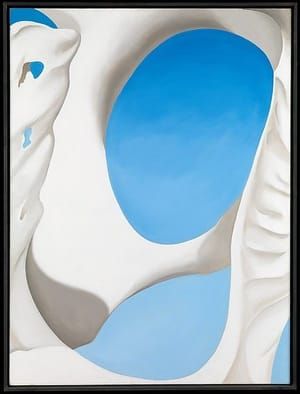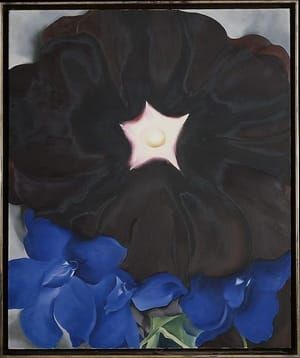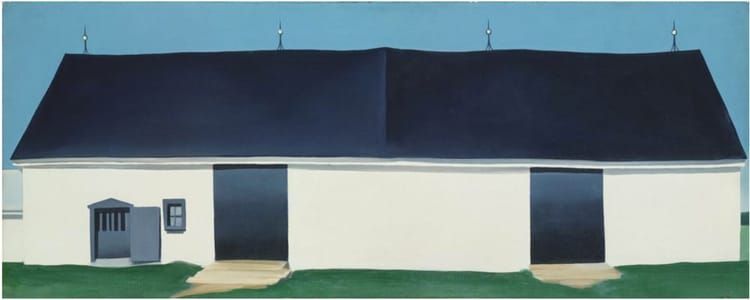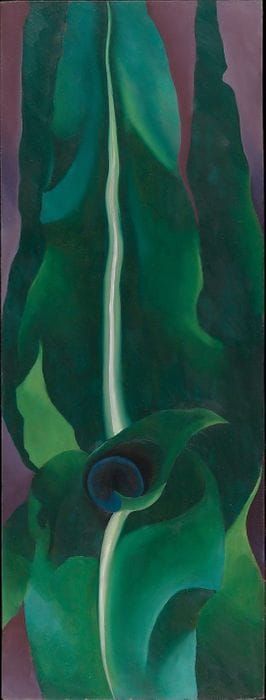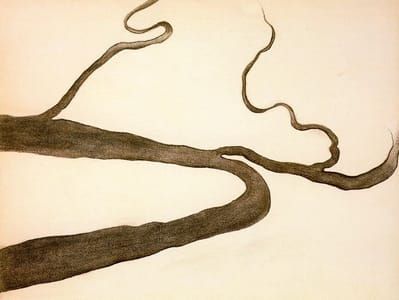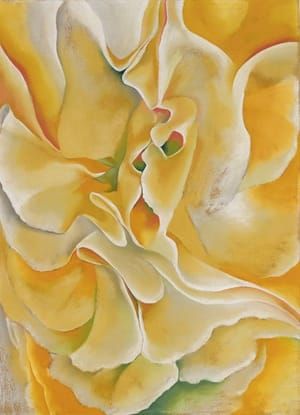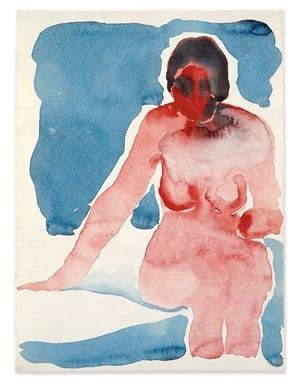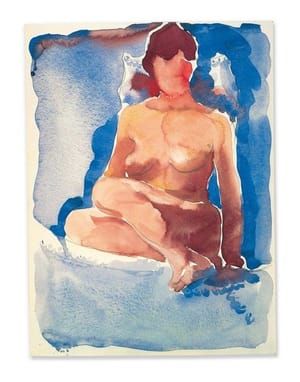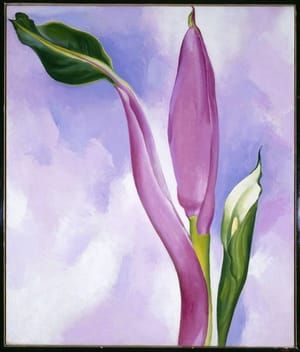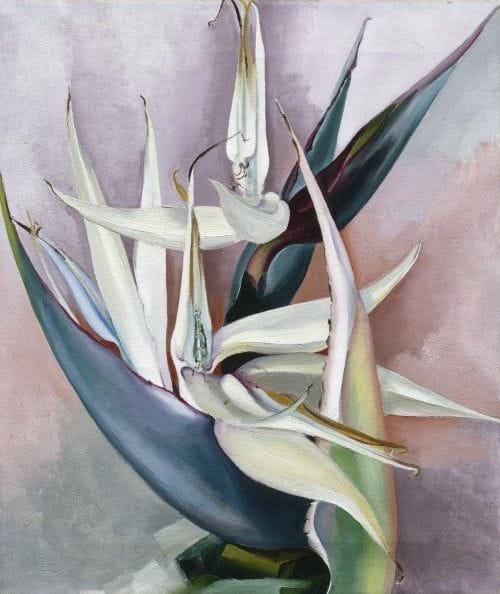

White Bird of Paradise, 1939
Georgia O'Keeffe
...[O'Keeffe spent] nine weeks in Hawaii in 1939 at the invitation of the Hawaiian Pineapple Company, which later evolved into the Dole Food Company. The corporation’s advertising firm, N.W. Ayer and Son, approached O’Keeffe about visiting the islands and painting canvases that might be used in the fruit company’s advertising.
“At that time,” Papanikolas told Pasatiempo, “it was very common and professionally acceptable for artists to support themselves through commercial enterprises. There were some purists — like O’Keeffe’s husband, Alfred Stieglitz — who staunchly maintained that artists should support themselves strictly through their artistic work and starve if necessary. But for the most part, the boundary between the commercial and fine arts was blurred. Not until the art market began to pick up after World War II was a strong boundary articulated that separated what was accepted as fine art compared to commercial art.” Indeed, in the 1930s and ’40s, many of America’s best-known corporations arranged for highly respected artists to paint canvases relating in some way to their product line, including Coca-Cola, International Business Machines, Steinway & Sons, and Caterpillar Tractor. Among the artists who rendered works through such commissions were Picasso, Dalí, Dufy, and Léger. The Hawaiian Pineapple Corporation alone reeled in commissioned pieces from such midcentury American modernists as Yasuo Kuniyoshi, Millard Sheets, and Isamu Noguchi, in addition to O’Keeffe.
O’Keeffe seems to have been torn over where she stood on the matter. “She took her time deciding and setting her terms,” Papanikolas said. “In letters, she writes about how tempted she was by the flowery language and the pictures in the Hawaii tourist brochures she was sent, but all the time she was negotiating with the advertising firm to ensure her artistic autonomy.” In the end, the company facilitated the practical aspects of her visit but left her to her own devices when it came to artistic matters. She made the rounds of Oahu, Maui, Kauai, and Hawaii (the Big Island), but for her paintings she steered clear of images of a touristic sort.
...Papanikolas finds O’Keeffe’s Hawaiian paintings distinctive even apart from their specific imagery. “I like to zero in on the paintings of the heliconia and the white bird of paradise as uniquely Hawaiian. Those two are super-outlandish flowers — big flowers, impressive when you see them in person. In White Bird of Paradise, there’s a palette of blue, white, and reflective pinks, and they make a really cool color-field background, rather than just be a traditional ‘botanical painting.’ The realism breaks down. She leaves out the mess that would be part of these plants in nature. It’s a very selective approach to depicting plants, such that sometimes the specimens are not immediately recognizable. In Heliconia — Crab Claw, there’s a low horizon line with a distant island. If you are familiar with the region, you know immediately that this is Maui. There is an unmistakable sense of place.”
[http://www.santafenewmexican.com/pasatiempo/art/museum_shows/pineapple-expressionism-georgia-o-keeffe-and-ansel-adams-in-hawaii/article_a6c9b963-62c8-5b8e-b276-730539c101de.html]
19 x 16 in
Uploaded on Jan 5, 2018 by Suzan Hamer
Georgia O'Keeffe
artistArthur
Wait what?
